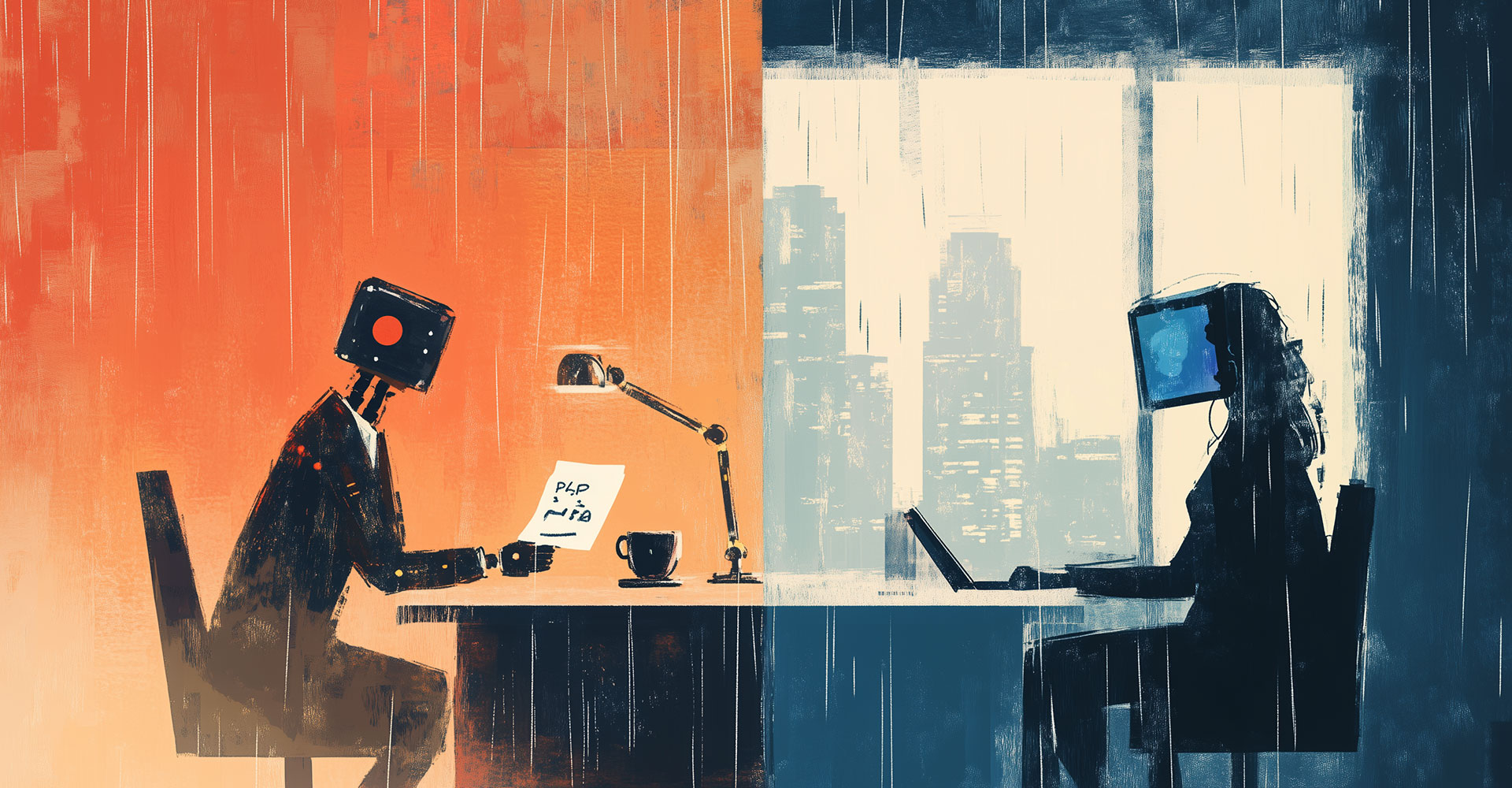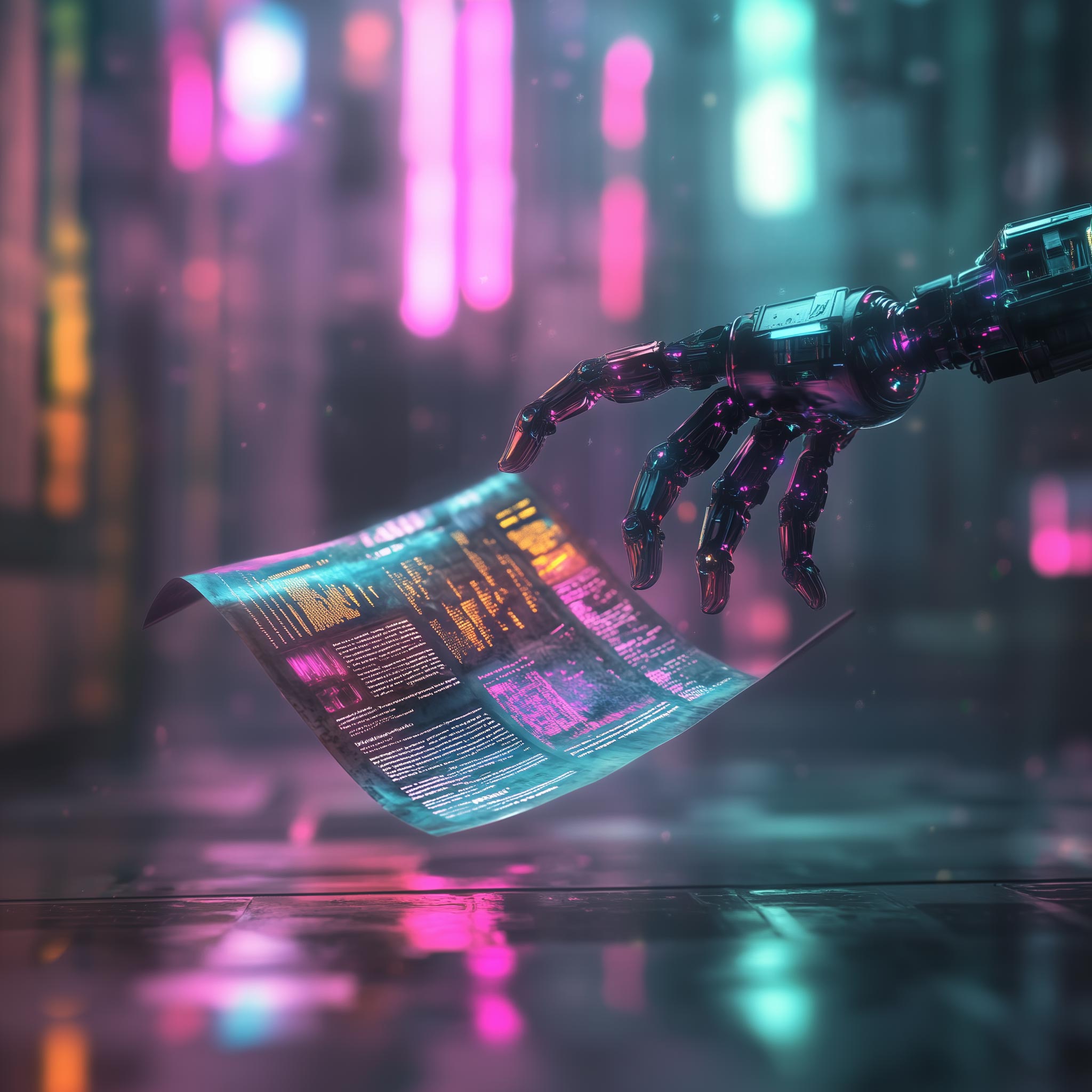Robots aren’t coming for your job. They’re already in HR, making notes.
But don’t panic. The AI revolution is a mixed bag. Sure, some roles are slipping quietly into automation oblivion, but others are being born faster than ChatGPT can write a cover letter. It’s less a jobs apocalypse, more a dramatic career costume change.
Part I: Out With the Old?
AI is hoovering up repetitive, rules-based tasks across admin, finance, customer service, and manufacturing. Data entry clerks, beware. Even junior coders and paralegals are on the line.
But let’s not forget: AI still can’t fix a leaking tap, perform surgery, or convince a toddler to put on their shoes. That means skilled trades, healthcare workers, educators, and anyone with a decent dose of empathy and elbow grease are sitting pretty.
What If Robots Do Fix Taps?
When robots capable of physical dexterity and emotional nuance become mainstream, this statement evolves — but doesn’t evaporate. Sure, machines may assist with plumbing or support surgery, but humans still lead, interpret, and connect. Fixing a leak in a 100-year-old wall or comforting a scared patient isn’t about perfection — it’s about judgement, empathy, and trust. So even when bots lend a hand, human roles will shift up, not out.
Part II: In With the New
AI isn’t just replacing jobs. It’s creating new ones. Think AI trainers, data ethicists, AI-powered logistics coordinators, and prompt engineers (yes, it’s a thing). If you can blend tech savvy with human-centred thinking, you’re in.
In other words: people who can get AI to do the boring stuff while they focus on the magic.
Part III: The Skills Shake-Up
The World Economic Forum reckons half the global workforce needs reskilling by 2025. That’s not a typo. Half.
Technical chops are important (Python, AI tools, data analysis), but the real superpowers are deeply human: critical thinking, creativity, emotional intelligence, and the ability to learn on the fly. The future belongs to the curious.
Table 1: The Future-Proof Skillset
| Skill Category | Specific Skills | Why it’s Important | Example Roles |
|---|---|---|---|
| Cognitive & Analytical | Critical thinking, problem solving, creativity | Strategic decisions, evaluating AI | Strategists, scientists, creatives |
| Social & Emotional | Empathy, communication, collaboration, leadership | Human connection, leadership, care | Teachers, nurses, HR specialists |
| Technical & Digital | AI literacy, data analysis, Python, cybersecurity | Managing and building AI systems | AI developers, analysts, AI PMs |
| Adaptive & Learning | Growth mindset, resilience, curiosity | Navigating constant change and learning | Everyone, especially in dynamic fields |
Part IV: Forecast Fog – Who’s Saying What About AI’s Impact?
Everyone from Goldman Sachs to the UK government has a different take, but the chorus is clear: AI is rewriting the labour market, fast.
Comparative Forecasts: AI’s Impact on Job Displacement and Creation
| Source | Key Projection | Timeline | Key Caveats/Context |
| McKinsey Global Institute | 15-20% routine jobs displaced; up to 800M workers displaced; 25-30% new roles created | By 2030 | Disproportionate impact on workers lacking digital skills. AI adds ~1.2% GDP growth annually. |
| World Economic Forum (WEF) | 85M jobs displaced, 97M created | By 2025 | Earlier estimates. |
| WEF (Future of Jobs Report 2025, Coursera) | 92M jobs displaced, 170M created (net +78M) | By 2030 | Tech, green economy, and demographics drive changes. |
| WEF (Sand Technologies summary) | 19M created, 9M displaced (net +10M) | Next 5 years | Focused on AI/info-processing roles. |
| Goldman Sachs | 300M jobs globally could be replaced | Not specified | 25% of U.S./EU jobs at risk. |
| OECD | 27-28% jobs at high automation risk | Current | So far, little evidence of total net losses. |
| Gartner | 60% of job hours disrupted | By 2027 | Shift to skills-based hiring. |
| AllAboutAI | >41% of companies may reduce jobs | By 2030 | Business readiness varies. |
| UK Government | 7% displaced in 5 yrs, 18% in 10, 30% (2.2M) in 20 yrs | Next 5-20 years | Predictive, sector-specific modelling. |
Takeaway? Don’t bet on a single number. Bet on change. Resilience and readiness beat rigid plans every time.
Part V: What Leaders Must Do
Business leaders have a choice: use AI to cut costs or use it to boost people. The smart money’s on the latter. That means:
- Redesigning roles for human-AI collaboration
- Upskilling staff, not sidelining them
- Leading with ethics, not just algorithms
Companies that lean into augmentation (not just automation) won’t just survive. They’ll thrive.
Table 2: AI Impact Matrix – Roles at Risk vs Roles Evolving or Emerging
| Role Category | Risk Level | Vulnerability Factors | Resilience/Emerging Aspects | Relevant AI Tech |
| Data Entry Clerks | High | Repetitive data handling | Low complexity, easy to automate | RPA, ML |
| Junior Developers | High | Routine coding tasks | Entry level redundancy | Generative AI, Code Assistants |
| Customer Service (Tier 1) | High | Scripted, routine responses | Escalation handling | NLP, Chatbots |
| Doctors/Nurses | Low | Complex decision-making, empathy | AI-assisted diagnostics, human touch | ML, Computer Vision |
| Teachers | Low | Adaptive learning, social skills | Personalised learning with AI support | Adaptive Learning, NLP |
| AI/ML Engineers | Emerging | Specialised development skills | Building and maintaining AI | AI/ML frameworks |
| AI Ethics Consultants | Emerging | Governance and fairness | Crucial for responsible AI | Governance Tools, Policy Frameworks |
Part VI: Policy With Purpose
Governments must do more than wave from the sidelines. We’re talking:
- National AI skills frameworks
- Better safety nets for displaced workers
- Incentives for businesses that invest in people
Because without coordinated effort, we risk a digital divide where some surf the AI wave while others get buried beneath it.
Conclusion: AI as Teammate, Not Terminator
This is not the end of work. It’s a remix. Yes, some jobs are vanishing, but others are evolving. And many are just arriving, blinking into the spotlight.
The winners? People who mix curiosity with adaptability. Businesses that champion human-AI teamwork. And policymakers who treat AI not as a threat, but as a shared opportunity.
AI isn’t taking over. It’s joining the team. Let’s give it something worth collaborating on.



